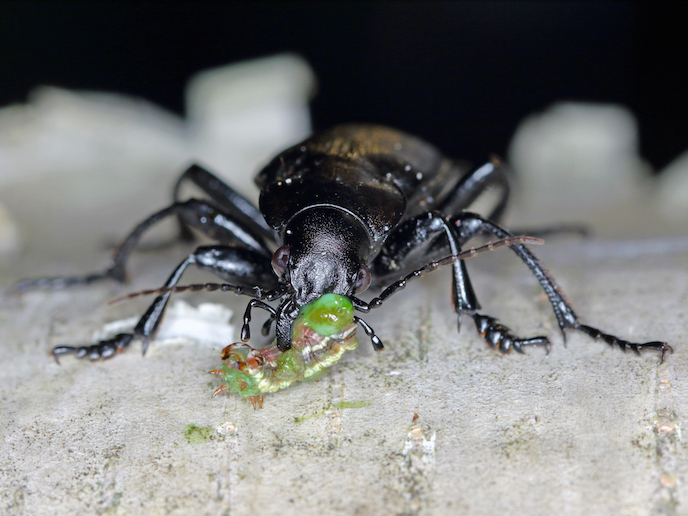Assessing carabid beetles as a biocontrol for slugs and other pests
Globally, slugs threaten crops including potatoes, wheat, brassicas, strawberries, canola and soybean. These pests cause considerable economic damage, especially in countries with mild and wet climates. Current control measures are expensive and either toxic to non-target organisms and the wider environment, unfeasible for large areas or only successful against certain species. Also, as slugs are often within soil which protects them from control agents, single applications are usually ineffective. The Marie Skłodowska-Curie Actions(opens in new window) supported project, CaraSlug, investigated carabid beetles, one of the natural predators of slugs, as a potential biological control. “While carabid beetle predation rates on slugs were disappointingly low, the results were more promising for other pests, such as caterpillars and cranefly larvae,” says Inga Reich, Marie Skłodowska-Curie fellow at the National University of Ireland Galway(opens in new window), the project host. A paper has already been published in 'Insects'(opens in new window), with three more under development, which include looking at carabid predation on alternative prey, such as springtails or earthworms.
Putting beetles through their paces
As well as being natural enemies of slugs, carabid beetles were selected for CaraSlug because they are often abundant in agroecosystems, and different species are active at different times of the year. This is beneficial as slugs can be problematic all year round. CaraSlug looked at carabid beetle assemblages in Oregon, United States, in 10 differently managed grass seed fields – till vs no-till and vegetated vs non-vegetated field margins. This allowed the team to determine which management options worked best for carabid species feeding on slugs, and caterpillars and cranefly larvae, which were also investigated. Sampling took place biweekly for 15 months. Beetles were captured with pitfall traps, two rows per field, one close to the edge and one 70 m in. Each row had five sample points, each with four pitfall traps and one refuge trap to determine pest prevalence. Beetles were killed after sampling using dry ice and then identified in the laboratory. DNA was extracted from the guts of beetles and screened for slugs and other pests using qPCR(opens in new window). The extracted DNA was also submitted for next-generation sequencing (NGS), carried out to gain information about the beetle’s overall diet. Pest predation was detected but at rates lower than expected. Feeding trials were conducted with the most common species of carabid beetle Nebria brevicollis(opens in new window), which accounted for most slug predation as tested by the qPCR. Beetles were starved for 7 days before being presented with juvenile slugs and slug eggs, then left for 4 days. None of the slugs or their eggs were consumed, indicating that the positive qPCR results were more likely due to scavenging than predation. “We found that N. brevicollis fed on other pests, caterpillars and cranefly larvae, during their autumn emergence. As this coincides with the timing of grass seed sowing, it could help delay population growth in these pests until the crop is less susceptible to damage,” explains Reich.
A sustainable agri-food industry
Pesticides are damaging to the environment and human health. CaraSlug is aiming to further the EU’s ambition of building a sustainable agri-food industry(opens in new window) and to develop an alternative pest control approach. The team will further assess the impact of N. brevicollis on the native invertebrate fauna in Oregon grass seed fields. The outcome of work conducted in Ireland to determine the influence of farming intensity on slugs and carabids will be completed. This work, focussing on larvae, was delayed by the coronavirus pandemic.







